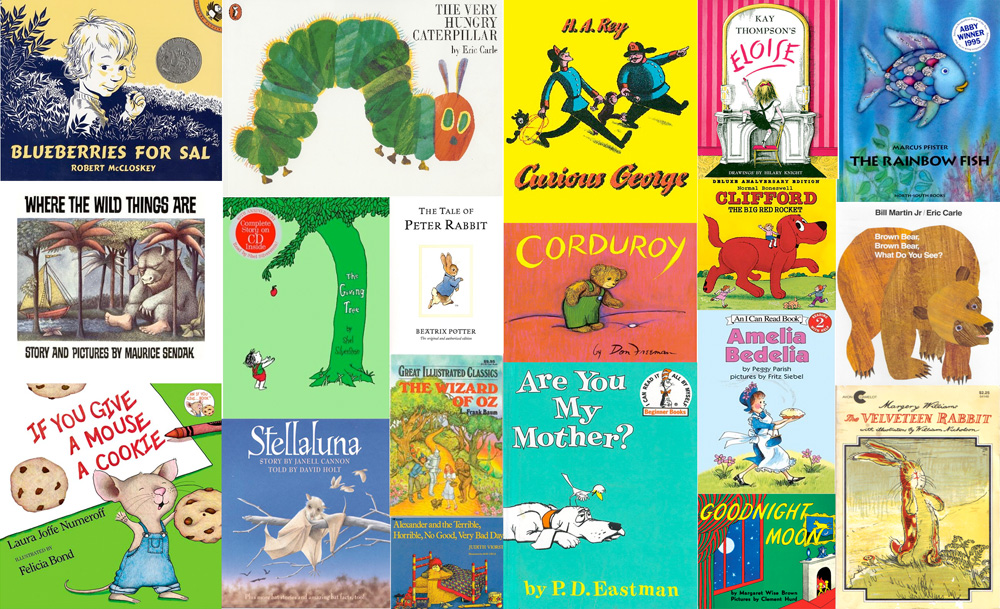Simple fact. Most of what we needed to know to succeed in business we learned on the playground, but now ignore or forget. Here is a recommendation for 10 books you should definitely add to your reading list and will teach you as much as some bestselling business books about what it takes to succeed in business…and life.
10 books containing important lessons for business and life
All those books are relatively short, and therefore easy to read, but if you look beyond the fact that these books are marketed as children’s books, they each contain important lessons that we would do well to remember.
-
- The Lorax – On respecting people and natural resources along the way. The Lorax tells the tale of the greedy and short-sighted Once-ler who chops down all his resources in an effort to grow his business. Not only does he despoil the environment, but he also puts himself out of business. This book is a must-read for any business student as it stresses the importance of balance and vision in growing a business as well as a reminder that natural resources must be dealt with respectfully.
- The Little Prince – On the role of compassion and intuition. It is only with the heart that one can see rightly; what is essential is invisible to the eye.” “What makes the desert beautiful,” said the little prince, “is that somewhere it hides a well…” “Well, I must endure the presence of two or three caterpillars if I wish to become acquainted with the butterflies.” “All men have the stars,” he answered, “but they are not the same things for different people. For some, who are travelers, the stars are guides. For others they are no more than little lights in the sky. For others, who are scholars, they are problems. For my businessman they were wealth. But all the stars are silent.
- Where the Wild Things Are – On the dance between quest, emotion, fear and solace. But one of the biggest business lessons—perseverance—comes from what happened to the book when it first came out. “According to Sendak, at first the book was banned in libraries and received negative reviews. It took about two years for librarians and teachers to realize that children were flocking to the book, checking it out over and over again, and for critics to relax their views. Since then, it has received high critical acclaim. The book is ‘one of the very few picture books to make an entirely deliberate, and beautiful, use of the psychoanalytic story of anger.
- The Giving Tree – On giving without expectation of reciprocation. Ben Jackson, professor of Religious Studies at Stanford University shared: “Is this a sad tale? Well, it is sad in the same way that life is depressing. We are all needy, and, if we are lucky and any good, we grow old using others and getting used up. Tears fall in our lives like leaves from a tree. Our finitude is not something to be regretted or despised, however; it is what makes giving (and receiving) possible. The more you blame the boy, the more you have to fault human existence. The more you blame the tree, the more you have to fault the very idea of parenting. Should the tree’s giving be contingent on the boy’s gratitude? If it were, if fathers and mothers waited on reciprocity before caring for their young, then we would all be doomed.”
- Alexander and the Terrible, Horrible, Very Bad Day – On how we choose the frame within which we operate. How we choose to view circumstance determines how we see the world around us…and the fact that stuff happens, but there’s always an opportunity to start again. “I went to sleep with gum in my mouth and now there’s gum in my hair and when I got out of bed this morning I tripped on the skateboard and by mistake I dropped my sweater in the sink while the water was running and I could tell it was going to be a terrible, horrible, no good, very bad day.”
- Oh the Places You Will Go – On self-determination and leadership. “Don’t be fooled by the title of this seriocomic ode to success; it’s not ‘Climb Every Mountain,’ kid version. All journeys face perils, whether from indecision, from loneliness, or worst of all, from too much waiting. Seuss’ familiar pajama-clad hero is up to the challenge, and his odyssey is captured vividly in busy two-page spreads evoking both the good times (grinning purple elephants, floating golden castles) and the bad (deep blue wells of confusion). Seuss’ message is simple but never sappy: life may be a ‘Great Balancing Act,’ but through it all ‘There’s fun to be done.
- Ox-Cart Man. This book tells the story of a family in 18th century New England who grow and make what they can throughout the year, then the father takes their goods into town to trade for those items they cannot provide for themselves. The book illustrates the success and growth of the family business, as well as the idea that a business must work as a part of the community. Business students would do well to remember the ideas present in this book, including the circle of life and growth of a business and the interdependence of complementary industries.
- The Day-Glo Brothers by Chris Barton. This non-fiction picture book tells the story of brothers, Bob and Joe Switzer. As children, Bob wanted to become a doctor and Joe loved putting on magic acts for people. Working together, the brothers stumbled upon a way to create fluorescent paint that glowed in the dark. This simple, yet engaging tale shows how creativity, ingenuity, and chasing one’s dreams can pave the way to big accomplishments. Any business student that dreams of entrepreneurship will enjoy the inspiration in this true story.
- Caps for Sale. In Caps for Sale, a cap salesman travels through town showcasing his wares stacked upon his head. After a long day with no sales, and therefore, no food, he sits down to rest against a tree. When he awakens, he discovers his caps are gone and have been taken by a tree full of monkeys, each wearing one of his caps. The salesman must figure out how to get his product back and does so almost by accident. This book demonstrates some of the realities of business (that times can be slow and may affect your ability to earn a livelihood), but also shows creative marketing that a smart business person must rely on ingenuity to protect his resources.
- Beyond the Traditional Lemonade Stand. This book provides detailed information on how children can get any small business up and running. With insight into accounting and finance as well as creative ways to make money, this book will give business students an opportunity to think about entrepreneurship in a different way. Whether you ran a lemonade stand as a kid or not, read this book to revisit the idea of young entrepreneurship.


